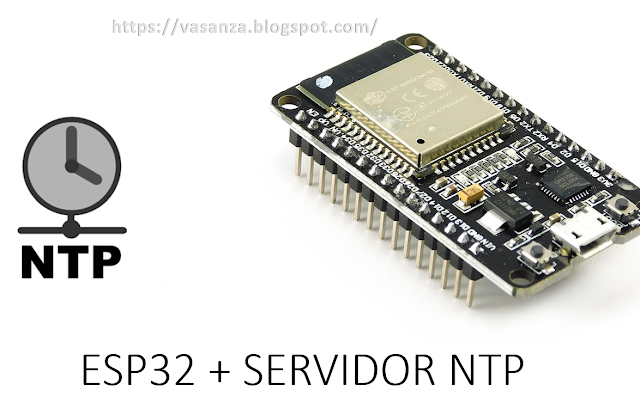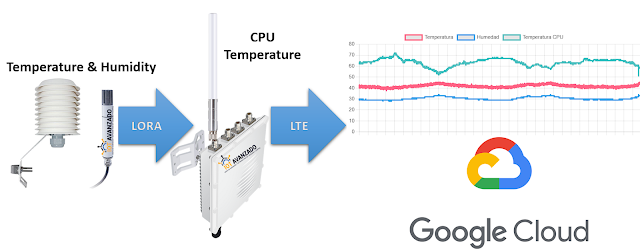▷ #BCI System using a Novel Processing Technique Based on Electrodes Selection for Hand #Prosthesis Control
⭐⭐⭐⭐⭐ #BCI System using a Novel Processing Technique Based on Electrodes Selection for Hand #Prosthesis Control from Victor Asanza
- ➡️ #EEG #Classification #HumanMachineInterface #BCI #BrainComputerInterface #Emotiv
- ✅ #DigitalSystems #DigitalElectronic #DigitalCircuits #HDL #VHDL #FPGA
- ➡️ BMS2021: 11th IFAC Symposium on Biological and Medical Systems #BMS2021
- ➡️ Presented by: Alisson Constantine
- ➡️ When using this resource, please cite the original publication:
- ✅ Abstract:
- This work proposes an end-to-end model architecture, from feature extraction to classification using an Artificial Neural Network. The feature extraction process starts from an initial set of signals acquired by electrodes of a Brain-Computer Interface (BCI). The proposed architecture includes the design and implementation of a functional six Degree-of-Freedom (DOF) prosthetic hand. A Field Programmable Gate Array (FPGA) translates electroencephalography (EEG) signals into movements in the prosthesis. We also propose a new technique for selecting and grouping electrodes, which is related to the motor intentions of the subject. We analyzed and predicted two imaginary motor-intention tasks: opening and closing both fists and flexing and extending both feet. The model implemented with the proposed architecture showed an accuracy of 93.7% and a classification time of 8.8y«s for the FPGA. These results present the feasibility to carry out BCI using machine learning techniques implemented in a FPGA card.
✅ Video of the talk:
✅ Conference content:
- Introduction
- EEG Dataset
- Methodology
- Results
- Conclusions
✅ References:
- Armijos, V.A., Chan, N.S., Saquicela, R., and Lopez, L.M. (2020). Monitoring of system memory usage embedded in fpga. In 2020 International Conference on Applied Electronics (AE), 1–4. doi:10.23919/AE49394. 2020.9232863.
- Artoni, F., Delorme, A., and Makeig, S. (2018). Applying dimension reduction to EEG data by principal com-ponent analysis reduces the quality of its subsequent independent component decomposition. NeuroImage, 175, 176–187. doi:10.1016/j.neuroimage.2018.03.016.
- Asanza, V., Constantine, A., Valarezo, S., and Peláez, E. (2020). Implementation of a classification system of eeg signals based on fpga. In 2020 Seventh International Conference on eDemocracy eGovernment (ICEDEG), 87–92. doi:10.1109/ICEDEG48599.2020.9096752.
- Asanza, V., Peláez, E., Loayza, F., Mesa, I., Díaz, J., and Valarezo, E. (2018). Emg signal processing with clustering algorithms for motor gesture tasks. In 2018 IEEE Third Ecuador Technical Chapters Meeting (ETCM), 1–6. doi:10.1109/ETCM.2018.8580270.
- Bansal, D. and Mahajan, R. (2019). Chapter 2 - eeg-based brain-computer interfacing (bci). In EEG-Based Brain-Computer Interfaces, 21–71. Academic Press. doi: https://doi.org/10.1016/B978-0-12-814687-3.00002-8.
- Becerra, M.A., Londoño-Delgado, E., Botero-Henao, O.I., Marín-Castrillón, D., Mejia-Arboleda, C., and Peluffo-Ordóñez, D.H. (2019). Lecture Notes in Computer Science (including subseries Lecture Notes in Artificial Intelligence and Lecture Notes in Bioinformatics), volume 11466 LNBI, inbook Low Resolution Electroencephalographic-Signals-Driven Semantic Re
- trieval: Preliminary Results, 333–342. Springer Verlag.
- Cedeño Z., C., Cordova-Garcia, J., Asanza A., V., Ponguillo, R., and Muñoz M., L. (2019). k-nn-based emg recognition for gestures communication with limited hardware resources. In 2019 IEEE SmartWorld, Ubiquitous Intelligence Computing, Advanced Trusted Computing, Scalable Computing Communications, Cloud Big Data Computing, Internet of People and Smart City Innovation (Smart World/SCALCOM/UIC/ATC/CBDCom/IOP/SCI), 812–817. doi:10.1109/SmartWorld-UIC-ATC-SCALCOM-IOP-SCI.2019.00170.
- Fuentes-Gonzalez, J., Infante-Alarc ́on, A., Asanza, V., and Loayza, F.R. (2021). A 3d-printed eeg based prosthetic arm. In 2020 IEEE International Conference on E-health Networking, Application Services (HEALTH-COM), 1–5. doi:10.1109/HEALTHCOM49281.2021.9399035.
- Goldberger, A.L., Amaral, L.A.N., Glass, L., Hausdorff, J.M., Ivanov, P.C., Mark, R.G., Mietus, J.E., Moody, G.B., Peng, C.K., and Stanley, H.E. (2000). PhysioBank, PhysioToolkit, and PhysioNet. Circulation, 101(23). doi:10.1161/01.cir.101.23.e215.
- McDonald, C.L., Westcott-McCoy, S., Weaver, M.R., Haagsma, J., and Kartin, D. (2020). Global prevalence of traumatic non-fatal limb amputation. Prosthetics and Orthotics International, 0(0), 0309364620972258. doi: 10.1177/0309364620972258.
- Osborn, L.E., Dragomir, A., Betthauser, J.L., Hunt, C.L., Nguyen, H.H., Kaliki, R.R., and Thakor, N.V. (2018). Prosthesis with neuromorphic multilayered e-dermis perceives touch and pain. Science Robotics, 3(19), eaat3818. doi:10.1126/scirobotics.aat3818.
- Parr, J.V.V., Vine, S.J., Wilson, M.R., Harrison, N.R., and Wood, G. (2019). Visual attention, EEG alpha power and t7-fz connectivity are implicated in prosthetic hand control and can be optimized through gaze training. Journal of NeuroEngineering and Rehabilitation, 16(1). doi:10.1186/s12984-019-0524-x.
- Petrini, F., Mazzoni, A., Rigosa, J., Giambattistelli, F., Granata, G., Barra, B., Pampaloni, A., Guglielmelli, E., Zollo, L., Capogrosso, M., Micera, S., and Raspopovic, S. (2019). Microneurography as a tool to develop decoding algorithms for peripheral neuro-controlled hand prostheses. BioMedical Engineering OnLine, 18. doi: 10.1186/s12938-019-0659-9.
- ˇRezankov ́a, H. (2018). Different approaches to the silhouette coefficient calculation in cluster evaluation. In 21st International Scientific Conference AMSE Applications of Mathematics and Statistics in Economics 2018, 1–10.
- Roux, F.E., Djidjeli, I., and Durand, J.B. (2018). Functional architecture of the somatosensory homunculus detected by electrostimulation. The Journal of Physiology, 596(5), 941–956. doi:10.1113/jp275243.
- Schalk, G., McFarland, D., Hinterberger, T., Birbaumer, N., and Wolpaw, J. (2004). BCI2000: A general-purpose brain-computer interface (BCI) system. IEEE Transactions on Biomedical Engineering, 51(6), 1034–1043. doi: 10.1109/tbme.2004.827072.
- Sinaga, K.P. and Yang, M.S. (2020). Unsupervised k-means clustering algorithm. IEEE Access, 8, 80716–80727. doi:10.1109/ACCESS.2020.2988796.
- Svozil, D., Kvasnicka, V., and Posp ́ıchal, J. (1997). Introduction to multi-layer feed-forward neural networks. Chemometrics and Intelligent Laboratory Systems, 39,
- 43–62.
- Zaki, M.J. and Meira, W. (2014). Data Mining and Analysis: Fundamental Concepts and Algorithms. Cambridge University Press, USA.
- Zhang, T., Jiang, L., and Liu, H. (2018). Design and functional evaluation of a dexterous myoelectric hand prosthesis with biomimetic tactile sensor. IEEE Transactions on Neural Systems and Rehabilitation Engineering, 26(7), 1391–1399. doi:10.1109/TNSRE.2018.2844807.
- Zilles, K. (2018). Brodmann: a pioneer of human brain mapping—his impact on concepts of cortical organization. Brain, 141(11), 3262–3278. doi:10.1093/brain/awy273.
- Al-Saegh, A., Dawwd, S.A., and Abdul-Jabbar, J.M. (2021). Deep learning for motor imagery eeg-based classification: A review. Biomedical Signal Processing and Control, 63, 102172.
- Artoni, F., Delorme, A., and Makeig, S. (2018). Applying dimension reduction to eeg data by principal component analysis reduces the quality of its subsequent independent component decomposition. NeuroImage, 175, 176-187.
- Asanza, V., Constantine, A., Valarezo, S., and Peláez, E. (2020). Implementation of a classification system of eeg signals based on fpga. In 2020 Seventh International Conference on eDemocracy & eGovernment (ICEDEG), 87-92. IEEE.
- Chen, X., Wang, Y., Gao, S., Jung, T.P., and Gao, X. (2015). Filter bank canonical correlation analysis for implementing a high-speed ssvep-based brain-computer interface. Journal of neural engineering, 12(4), 046008.
- Chen, X., Zhao, B.,Wang, Y., and Gao, X. (2019). Combination of high-frequency ssvep-based bci and computer vision for controlling a robotic arm. Journal of neural engineering, 16(2), 026012.
- Chen, X., Zhao, B., Wang, Y., Xu, S., and Gao, X. (2018). Control of a 7-dof robotic arm system with an ssvep-based bci. International journal of neural systems, 28(08), 1850018.
- Chouhan, T., Robinson, N., Vinod, A., Ang, K.K., and Guan, C. (2018). Wavlet phase-locking based binary classification of hand movement directions from eeg. Journal of neural engineering, 15(6), 066008.
- Edla, D.R., Mangalorekar, K., Dhavalikar, G., and Dodia, S. (2018). Classification of eeg data for human mental state analysis using random forest classifier. Procedia computer science, 132, 1523-1532.
- Erkan, E. and Akbaba, M. (2018). A study on performance increasing in ssvep based bci application. Engineering Science and Technology, an International Journal, 21(3), 421-427.
- Fischer, N.L., Peres, R., and Fiorani, M. (2018). Frontal alpha asymmetry and theta oscillations associated with information sharing intention. Frontiers in behavioral neuroscience, 12, 166.
- Ghaemi, A., Rashedi, E., Pourrahimi, A.M., Kamandar, M., and Rahdari, F. (2017). Automatic channel selection in eeg signals for classification of left or right hand movement in brain computer interfaces using improved binary gravitation search algorithm. Biomedical Signal Processing and Control, 33, 109-118.
- Han, X., Lin, K., Gao, S., and Gao, X. (2018). A novel system of ssvep-based human-robot coordination. Journal of neural engineering, 16(1), 016006. Huang, D., Qian, K., Fei, D.Y., Jia, W., Chen, X., and Bai, O. (2012). Electroencephalography (eeg)-based brain-computer interface (bci): A 2-d virtual wheelchair control based on event-related desynchronization/synchronization and state control. IEEE Transactions on Neural Systems and Rehabilitation Engineering, 20(3), 379-388.
- Khosla, A., Khandnor, P., and Chand, T. (2020). A comparative analysis of signal processing and classification methods for different applications based on eeg signals. Biocybernetics and Biomedical Engineering, 40(2), 649-690.
- Raquel Tinoco-Egas, Karla Aviles, Jamil Torres-Brunes, Hector Trivino-Gonzalez, Víctor Asanza, Félix Rosales-Uribe, Francis R. Loayza, Enrique Peláez, April 27, 2021, "SSVEP-EEG data collection using Emotiv EPOC", IEEE Dataport, doi: https://dx.doi.org/10.21227/0j42-qd38.
- Shao, L., Zhang, L., Belkacem, A.N., Zhang, Y., Chen, X., Li, J., and Liu, H. (2020). Eeg-controlled wall-crawling cleaning robot using ssvep-based brain-computer interface. Journal of healthcare engineering, 2020.
- Waytowich, N., Lawhern, V.J., Garcia, J.O., Cummings, J., Faller, J., Sajda, P., and Vettel, J.M. (2018). Compact convolutional neural networks for classification of asynchronous steady-state visual evoked potentials. Journal of neural engineering, 15(6), 066031.
- Zhang, D., Huang, B., Wu, W., and Li, S. (2015). An idle-state detection algorithm for ssvep-based brain-computer interfaces using a maximum evoked response spatial filter. International journal of neural systems, 25(07), 1550030.
Read related topics
- ✅ 2021: Charla #FIEC - #SSVEP_EEG Signal Classification based on #Emotiv EPOC #BCI and #RaspberryPi
- ✅ 2021 Paper: #SSVEP_EEG Signal Classification based on #Emotiv_EPOC #BCI and #RaspberryPi
- ✅ 2021: Charla #FIEC - A 3D-Printed #EEG based #Prosthetic #Arm
- ✅ 2020 Paper: Implementation of a Classification System of #EEG Signals Based on #FPGA
- ✅ 2019: Artificial Neural Network based #Accelerometer and #Gyroscope recognition for gesture communication (#InnovateFPGA)
- ✅ 2018 Paper: #EMG Signal Processing with Clustering Algorithms for Motor Gesture Tasks
- ✅ 2017 Paper: #EEG Signal Clustering for Motor and Imaginary Motor Tasks on Hands and Feet
- ✅ 2017 Paper: Supervised Pattern Recognition Techniques for Detecting Motor Intention of Lower Limbs in Subjects with Cerebral Palsy #CP
- ✅ 2016 Paper: Clustering of #EEG Occipital Signals using #K_means
- ✅ #EMG signal classification with Machine Learning #ML using #Matlab
- ✅ Epileptic seizure prediction with Machine Learning #ML using #Matlab
- ✅ #EEG signal classification with Machine Learning #ML using #Matlab
- ✅ Machine Learning #ML using #Matlab

























Comentarios
Publicar un comentario